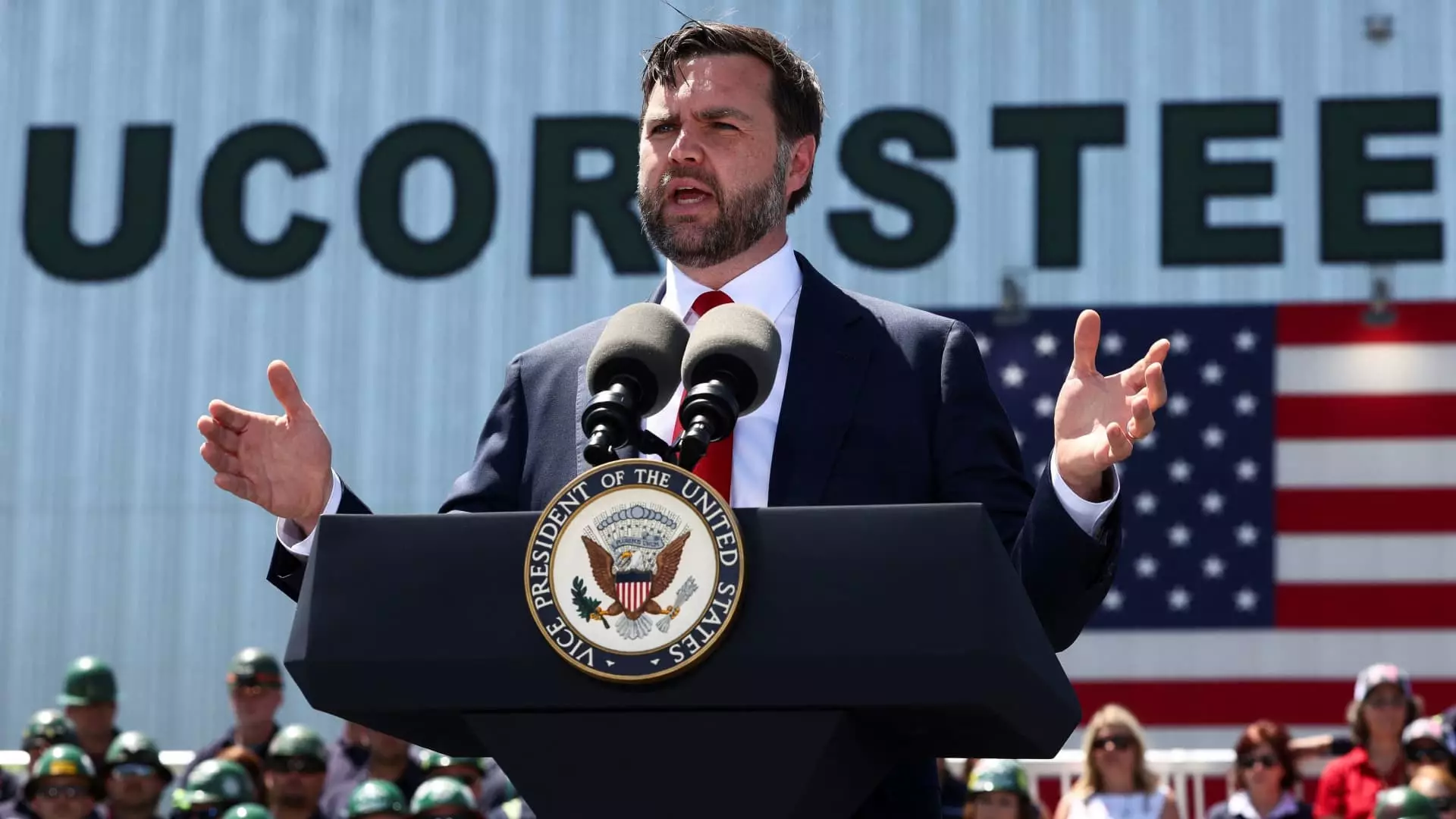The political landscape surrounding monetary policy has taken a dramatic turn, as President Donald Trump and Vice President JD Vance join forces to apply pressure on the Federal Reserve. Their unified front against the central bank illustrates not just a political strategy but also a potentially troubling approach toward managing economic policy. The insistence on cutting interest rates, framed as a corrective measure against so-called monetary malpractice, suggests an alarming disregard for the complexity and intricate nature of fiscal policy.
As Vice President Vance asserted on social media, the Fed’s reticence to lower rates in the face of tepid inflation data exemplifies a failure to respond adequately to current economic conditions. While Vance’s claim that rates should be reduced aligns with contemporary political pressures, it grossly understates the multifaceted implications such a move would entail. In essence, this narrative reduces a nuanced economic scenario into a simplistic call for action that may jeopardize long-term stability in favor of short-term gains.
The Misinterpretation of Economic Indicators
Recent consumer price index reports indicate minimal inflation increases, with only a 0.1% rise reported. These statistics, while suggestive of a cooling inflation environment, are being wielded by the Trump administration as a rallying cry for aggressive monetary policy adjustments. It’s essential to highlight the flaws in equating a single month’s data with broader economic trends. Inferring that the Fed is guilty of malpractice oversimplifies the daunting task of managing inflation expectations, particularly in an environment rife with external economic pressures, such as tariffs.
The backdrop of global economic uncertainties, including potential recessions and geopolitical tensions, complicates the narrative. A decision to cut rates based solely on domestic inflation numbers could send shockwaves through international markets and undermine confidence among investors, leading to unintended negative consequences. This cavalier approach to economics exhibits a disconnect from reality that should be concerning for anyone who understands the delicate balance of monetary policy.
Public Sentiment vs. Expert Insight
Although the administration’s push for lower interest rates may resonate with segments of the public eager for immediate financial relief, particularly in an era where inflation has been a persistent worry, the implications of such a shift warrant profound scrutiny. Are we truly considering the long-term ramifications that come with such an abrupt policy alteration? Reports from financial institutions suggest a much more cautious approach is warranted, emphasizing the ongoing uncertainties that face the market.
Elyse Ausenbaugh from J.P. Morgan Asset Management articulates this apprehension effectively. Her assertion that we might be entering a phase where rates should be considered carefully warns against the potential pitfalls of premature actions. What might seem like a populist demand could, in reality, be a detriment, potentially destabilizing an already vulnerable economic climate.
Trump and Vance’s rhetoric warrants critical examination, suggesting that the tug-of-war between political ambition and sound economic policy often leaves the average American in turmoil. Their approach, definable more by ambition than informed strategy, raises an essential question: Are we prioritizing electoral expediency over sustained fiscal health? The stakes are high, and as these leaders push for changes that suit their agenda, the broader economic implications cannot be overlooked.

